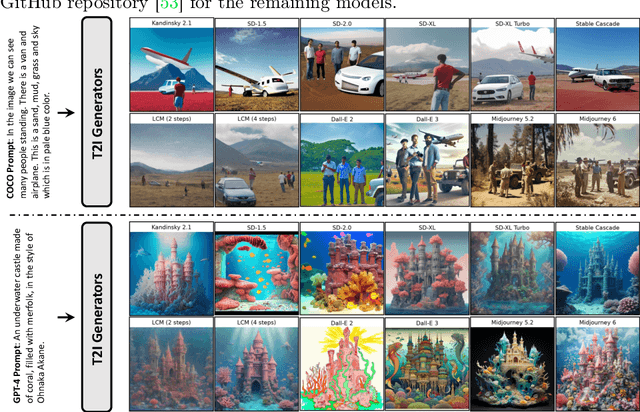Detecting Image Attribution for Text-to-Image Diffusion Models in RGB and Beyond
Paper and Code
Apr 10, 2024



Modern text-to-image (T2I) diffusion models can generate images with remarkable realism and creativity. These advancements have sparked research in fake image detection and attribution, yet prior studies have not fully explored the practical and scientific dimensions of this task. In addition to attributing images to 12 state-of-the-art T2I generators, we provide extensive analyses on what inference stage hyperparameters and image modifications are discernible. Our experiments reveal that initialization seeds are highly detectable, along with other subtle variations in the image generation process to some extent. We further investigate what visual traces are leveraged in image attribution by perturbing high-frequency details and employing mid-level representations of image style and structure. Notably, altering high-frequency information causes only slight reductions in accuracy, and training an attributor on style representations outperforms training on RGB images. Our analyses underscore that fake images are detectable and attributable at various levels of visual granularity than previously explored.
 Add to Chrome
Add to Chrome Add to Firefox
Add to Firefox Add to Edge
Add to Edge